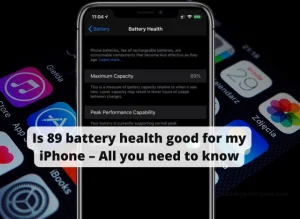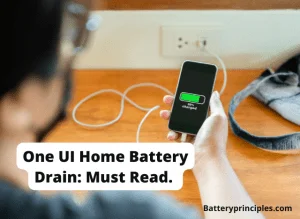When it comes to charging phones, the debate over whether slow charging or fast charging is better has been raging for years. Both methods have pros and cons. So the choice depends on the user’s needs.
First, let’s look at slow charging.
One of the main advantages of slow charging is that it is more friendly to the battery and can extend its life. Slow charging, on the other hand, generates less heat and is less likely to damage the battery over time.
However, slow charging has some cons. Many slow chargers (typical chargers ) usually come with 5 volts with 2 amperes. So the battery takes 2 to 3 hours to charge, which can be inconvenient for users who want to use their devices immediately. Additionally, slow charging may be less efficient, as it may take more energy and time to charge the battery to 100% capacity.
The fast charging technology
A few years ago we had to wait nearly three hours to charge our phones. Sometimes it lasted up to 4 hours. With the advancement of technology, new methods have been found that reduce this time. As a result of this, the fast charging system came to the fore. Fast charging technology allows us to recharge the phone with a large percentage in a few minutes.
It is a great solution that can save us from trouble as we can quickly charge our phones in an emergency or when we are away.
There is no doubt that fast charging has changed the way we use our phones. Currently, we can find fast chargers up to 210W.
While this fast charging feature is often found in high-end phones, some manufacturers have taken steps to add this feature to their mid-range phones as well.
Many fast chargers at least allow us to recharge 50% of the battery in 30 minutes; (eg latest iPhone 14, Pixel 7 Pro). We can also find fast chargers that allow us to charge the battery in 30 minutes or less.
For example, the 11V 55W charger released by Meizu (with its fast charging Super mCharge technology) promises 100% charge in 20 minutes. It takes over an hour to do this with a slow charger.
There are also some cons to fast charging. One of the main disadvantages is that it can be hard on the battery, shortening its life. Additionally, fast charging can generate more heat, which can cause the battery to degrade faster.
And also have been various opinions regarding the quick discharge of the battery in some phones by using fast charging. So we thought to find out more about is slow charge better for battery or fast charge is better.
Table of Contents
How do chargers work?
To know whether something is useful we must first understand how it works. Although the one in charge of receiving all the charging power is the smartphone, the one who does the work is the power adapter or the charger. It has the necessary technologies to recharge the phone battery.
The main components of the delivering power of the adapter are amperage, voltage, and watts:
- Amperage (usually in mAh ) – The amount of electricity that flows from the battery to any connected device.
- Voltage (V)- The speed or intensity of the current.
- Watts (W) – The amount when amperage is multiplied by voltage.
First, let’s see how a normal or slow charger works. Phone batteries are made up of two chemicals. When these components are combined, they react with each other and combine into a single chemical compound. A flow of electrons is generated, which creates energy to power the rest of the phone. This flow of electrons is called electricity.
How do fast chargers work?
Xiamo 65W faster charger
Now, a fast charge charger works on the same principle, but it has a significant difference: it delivers more Amps (A) and volts (V) than a standard charger.
Although there are several types, all fast-charging chargers work on the same principle. One type, the most well-known, sends a particularly high voltage and amperage, which is precisely the key. A normal charger delivers 5 volts and two amps, while a fast charger can deliver between 9 to 25 Watts. For amperes, the amount can go up to 3. And the watt of super-fast chargers can go from 25W to 210W.
Estimated charging time:
The difference between fast charging and slow charging is in milliamps. We did a test with the Nokia C01 plus, a mid-range smartphone with a 3,000 mAh battery capacity.
Accordingly, it takes 3 hours to charge this Nokia phone with a 1A charger and 1.25 hours to charge the same mobile phone with a 2.4A charger.
Are fast chargers bad for your phone?
In the early days of the discovery of fast charging technology, experts pointed out that fast charging harms our mobile phone’s battery because it drains too quickly.
Unlike in the past, however, companies have taken steps to produce fast charging in a manner that is not detrimental to the health of smartphones. Now the power and the mechanism are in the plug itself, it absorbs all the heat and manages the energy, allowing us to manage that load without any damage to our cell phone and especially the battery.
Does fast charging drain the battery faster?
Fast charging can cause some battery drain over time because of the increased heat generated during the charging process and more stress on the battery’s cells.
But a modern phone that supports fast charging, won’t drain the battery significantly faster than usual charging. The rate at which a battery degrades depends on various factors such as the type of battery, the number of times it is charged, how often the device is used and the temperature it is stored, and more.
How Long Does It Take To Charge The Ryobi 40v 6ah Battery?
battery principles
The answer to the question “is slow charge better for battery?”
Finally, the answer to “Is slow charging better for the battery?” It can be stated as follows.
In the case of a typical phone, slow battery charging is better, and in a phone specially designed for fast charging (like Samsung S22 Ultra), slow battery charging is not significantly better or worse.
If it is explained further, when a typical phone is connected to a fast charger, it shows that the battery is charging faster. But over time, the charging time may be less than a slow charge. The reason for that is that its battery cannot withstand the high wattage coming from it. It also causes an increase in internal temperature. It affects the chemistry of the battery: it means the health of the battery goes down.
But there is no significant benefit from slow charging because the phones that are used for fast charging have the necessary technology to withstand a high Watt value and control the temperature rise.
How to save the battery life of your phone?

Follow the steps below to increase the battery life of your phone.
- Don’t use the phone for long periods.
- Minimize running too many heavy applications (like online games).
- Keep the screen brightness low or activate the Auto brightness feature.
- Turn off the phone’s vibrate setting.
- Don’t use the phone until hot.
- Keep location services turned off unless necessary.
- Do not keep connected to Wi-Fi networks all the time.
- Update outdated software.
- Don’t allow the mobile phone to discharge completely.
- Always keep the charge above 25% and recharge between 25%-35%.
- Do not use the mobile phone except when necessary while charging. (Using the phone while charging will reduce the required charging time and cause the internal components to overheat. Sometimes the batteries of some older or low-quality Chinese devices can also explode.)
Conclusion
New smartphones that hit the market always give us improvements that try to be better than their competitors. They always include features like a better processor, camera, RAM, etc. However, over the years, we see that the size of batteries has not changed,
So different companies are launching new charging methods with their corresponding charger.
For the general public, it usually just means that the device has fast charging, but the truth is that there are different versions of this type of charging. It is worth following the manufacturer’s recommendations when choosing a charger for your phone.
Especially when buying a charger with fast charging technology, you need to find out if the phone has fast charging facilities. Otherwise, battery health will deteriorate when fast charging is connected, and slow charging is best for such a phone.






